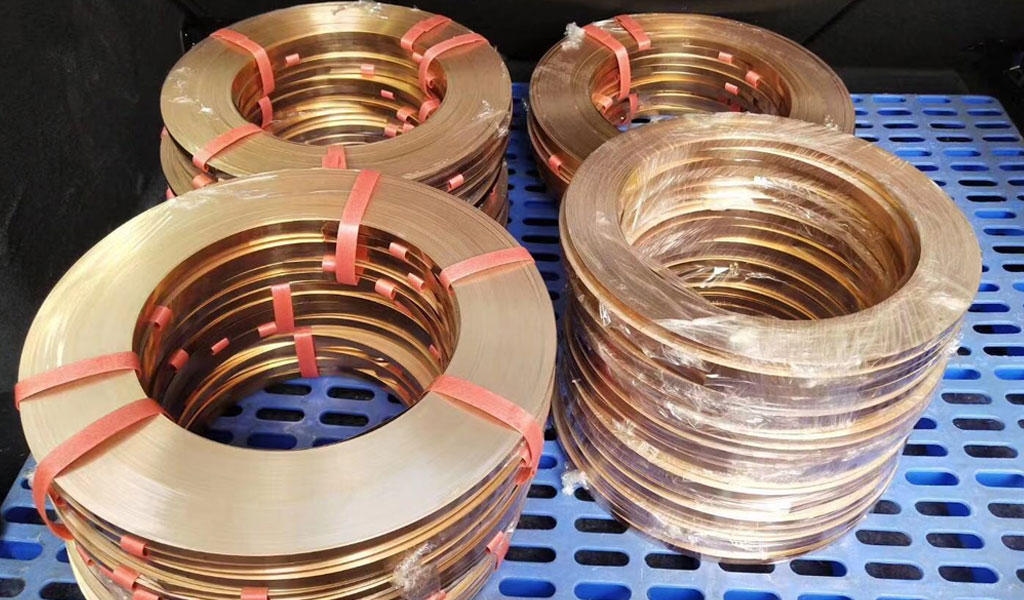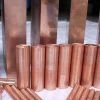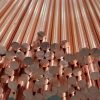
Beryllium copper (BeCu) is a high-performance metal alloy known for its combination of strength, electrical conductivity, and corrosion resistance. Its unique properties make it an essential material in various industries, including aerospace, automotive, electronics, and manufacturing. Beryllium copper cutting, the process of machining and shaping beryllium copper into specific forms, is a critical operation in the production of components for these industries. This article provides an in-depth look at the various aspects of beryllium copper cutting, including its characteristics, challenges, techniques, and applications.
Beryllium Copper: An Overview
Beryllium copper is primarily composed of copper, with a small percentage (usually 0.5–3%) of beryllium. This alloy is known for its remarkable strength-to-weight ratio, excellent thermal and electrical conductivity, and exceptional corrosion resistance. It is used in applications where high performance is required, particularly in environments where other materials would fail due to extreme conditions or stresses.
Beryllium copper is available in various forms, including rod, bar, sheet, and plate. It can be heat treated to achieve different levels of hardness, with some grades reaching levels that are comparable to steel, making it useful for demanding applications. The material is highly versatile and is used in a wide range of products, including electrical connectors, springs, bearings, and precision tooling.
Challenges in Cutting Beryllium Copper
Cutting beryllium copper presents several challenges that machinists must address to achieve high-quality results. These challenges primarily arise due to the hardness of the material and its tendency to work-harden during machining. The following are some of the key challenges involved in beryllium copper cutting:
- Work-Hardening: Beryllium copper work-hardens quickly, meaning that the material becomes harder and more difficult to machine as it is cut. This can lead to rapid tool wear and the need for frequent tool changes, increasing production time and cost.
- Tool Wear: The hardness of beryllium copper can cause significant wear on cutting tools, particularly those made of softer materials. Therefore, tools with high wear resistance, such as carbide or CBN (cubic boron nitride), are typically used for cutting beryllium copper.
- Heat Generation: During cutting operations, the material generates significant heat due to the friction between the tool and the workpiece. If not properly managed, this heat can lead to tool failure, poor surface finish, and dimensional inaccuracies.
- Beryllium Dust: Beryllium is a toxic metal, and when it is machined, it can produce fine dust particles that pose health risks to workers if inhaled. Proper ventilation, dust collection systems, and personal protective equipment (PPE) are essential when machining beryllium copper to prevent exposure to beryllium dust.
- Tooling Selection: Selecting the appropriate cutting tools and equipment is crucial for efficient and effective beryllium copper cutting. Due to the hardness and toughness of the material, specialized tools designed for high-performance machining are often required.
Techniques for Cutting Beryllium Copper
There are several machining techniques available for cutting beryllium copper, each suited to different applications and material thicknesses. The choice of technique depends on factors such as the desired precision, the complexity of the part, and the size of the production run.
- Turning: Turning is one of the most common methods used for cutting beryllium copper. It involves rotating the workpiece while a stationary cutting tool is fed into the material to remove excess material. Beryllium copper can be turned on both manual and CNC (computer numerical control) lathes, with CNC machines offering higher precision and automation for large production runs.
- Tooling: Carbide tools are typically used for turning beryllium copper due to their hardness and wear resistance. High-speed steel (HSS) tools may also be used for lighter cuts but wear out quickly compared to carbide tools.
- Cutting Parameters: The cutting speed, feed rate, and depth of cut must be carefully controlled to prevent excessive work hardening. Typically, a moderate cutting speed and low feed rate are recommended to avoid overheating and to maintain tool life.
- Milling: Milling is another common technique used for cutting beryllium copper. In this process, the workpiece is fed into a rotating cutter, which removes material in a series of passes. CNC milling machines are often used for precise cuts and complex geometries.
- Tooling: End mills, face mills, and ball nose mills are commonly used for beryllium copper milling. Carbide tools are preferred for their durability and ability to maintain sharp edges for longer periods.
- Cooling: To manage heat generation, cutting fluids or coolants are often used. Water-soluble coolants are typically preferred, as they help reduce friction and prevent the material from becoming too hard due to excessive heat buildup.
- Drilling: Drilling is often required when making holes in beryllium copper components. The process involves using a rotating drill bit to penetrate the material. For beryllium copper, specialized drill bits are required to prevent excessive wear and ensure a clean hole.
- Tooling: Carbide drill bits are commonly used for drilling beryllium copper due to their ability to withstand the high stresses of drilling hard materials.
- Drilling Parameters: Similar to turning and milling, drilling beryllium copper requires careful control of cutting parameters. A slower feed rate and moderate cutting speed are generally recommended to prevent work hardening and excessive tool wear.
- Grinding: Grinding is often used for achieving precise dimensions and smooth finishes on beryllium copper parts. The grinding process involves using a rotating abrasive wheel to remove material from the workpiece.
- Tooling: Diamond or CBN grinding wheels are often used for beryllium copper due to their hardness and ability to maintain a sharp edge. These wheels provide excellent precision and finish quality.
- Cooling: Grinding beryllium copper can generate significant heat, so coolant is often applied to reduce temperatures and extend tool life.
- Laser Cutting: Laser cutting is an advanced method that uses a focused laser beam to melt and vaporize the material. This process is often used for cutting thin sheets of beryllium copper with high precision.
- Advantages: Laser cutting offers the advantage of high-speed operation and the ability to cut complex shapes with minimal material wastage. It also produces a clean, precise edge without the need for additional finishing.
- Limitations: Laser cutting may not be suitable for thicker beryllium copper materials, as the heat-affected zone can cause undesirable changes in material properties.
- Wire EDM (Electrical Discharge Machining): Wire EDM is a non-traditional machining process that uses a thin wire electrode to erode material from the workpiece through electrical discharge. This process is highly precise and can be used to cut intricate shapes in beryllium copper.
- Advantages: Wire EDM offers high precision and can cut complex geometries that may be difficult or impossible to achieve with traditional cutting methods.
- Limitations: Wire EDM is slower than traditional cutting methods and may not be cost-effective for high-volume production.
- Waterjet Cutting: Waterjet cutting is a non-thermal cutting process that uses a high-pressure stream of water, often mixed with abrasive materials, to cut through beryllium copper. This technique is particularly useful for cutting thick materials without affecting the material properties.
- Advantages: Waterjet cutting does not produce heat, so it avoids the risk of work hardening or altering the material’s properties. It can also cut thick materials and produce clean edges.
- Limitations: Waterjet cutting may be slower compared to other techniques, and the equipment can be expensive.
Applications of Beryllium Copper
Beryllium copper is used in a wide variety of applications, ranging from electrical components to mechanical parts. Its excellent properties make it an ideal choice for applications that require a combination of strength, electrical conductivity, and corrosion resistance.
- Aerospace and Defense: Beryllium copper is used in the aerospace and defense industries for manufacturing components such as connectors, switches, and springs. The alloy’s high strength and electrical conductivity make it ideal for these critical applications, where performance and reliability are paramount.
- Electrical and Electronics: Beryllium copper is widely used in electrical connectors, switches, and relays due to its excellent electrical conductivity and resistance to corrosion. The material is also used in circuit breakers, contacts, and other components where electrical performance is crucial.
- Automotive: In the automotive industry, beryllium copper is used for producing electrical components, such as connectors and sensors. The alloy’s resistance to corrosion and ability to withstand high temperatures make it suitable for harsh automotive environments.
- Manufacturing: Beryllium copper is used to create precision tools, dies, and molds in the manufacturing industry. Its high strength and wear resistance make it ideal for applications that require durability and long tool life.
- Medical Devices: Beryllium copper is also used in the medical field, particularly for producing medical instruments and devices that require high precision and strength. The alloy is used in components like springs, bearings, and other small parts that must withstand repeated use.
Health and Safety Considerations
Beryllium is a toxic metal, and machining beryllium copper can generate fine dust particles that may pose health risks to workers. Inhalation of beryllium dust can lead to a chronic lung disease known as berylliosis, which is potentially fatal. Therefore, strict health and safety protocols must be followed when cutting beryllium copper.
- Ventilation: Proper ventilation is essential when machining beryllium copper to prevent the accumulation of harmful dust. Dust collection systems, such as local exhaust ventilation (LEV), should be used to capture airborne particles.
- Protective Equipment: Personal protective equipment (PPE) such as respirators, gloves, and protective clothing should be worn by workers when handling or machining beryllium copper. Additionally, workers should be trained in the risks associated with beryllium exposure and the correct safety procedures.
- Environmental Controls: In addition to PPE and ventilation systems, environmental controls such as air monitoring and regular cleaning of workspaces are essential to minimize exposure to beryllium dust.
Conclusion
Beryllium copper cutting is a challenging but essential process for manufacturing high-performance components in industries such as aerospace, electronics, automotive, and medical devices. The material’s unique combination of strength, conductivity, and corrosion resistance makes it ideal for critical applications. However, cutting beryllium copper requires careful attention to tooling, cutting parameters, and safety precautions to ensure high-quality results and protect workers from harmful exposure to beryllium dust.
By understanding the characteristics of beryllium copper, selecting the appropriate cutting techniques, and following stringent safety protocols, manufacturers can efficiently and safely produce high-precision components for a wide range of applications.






